Navratri is not just a festival; it’s a celebration of tradition, devotion, and vibrant fashion.
With each day marked by a different colour and energy, it’s the perfect opportunity to showcase your style while paying homage to Maa Durga.
Imagine gliding through the morning Aarti in a graceful yellow saree, and by evening, you’re the star of the Garba night, twirling in a stunning red lehenga.
Whether you’re attending the sacred Puja or dancing the night away, the right outfit can elevate your spirit and connect you with the essence of Navratri.
From elegant sarees to trendy lehengas, and modern Indo-western fusions, this guide offers nine uniquely curated looks, one for each day of Navratri.
You’ll find outfit inspiration that blends tradition with contemporary fashion, ensuring you’re in sync with the festival and at the top of your fashion game.
Get ready to embrace the colours, the culture, and the joy of Navratri with these nine unforgettable outfits.
Scroll down to explore how you can create the perfect look for every day, from morning Aarti rituals to lively Garba nights!
Table of Contents
Importance of Navratri Colours and Traditions
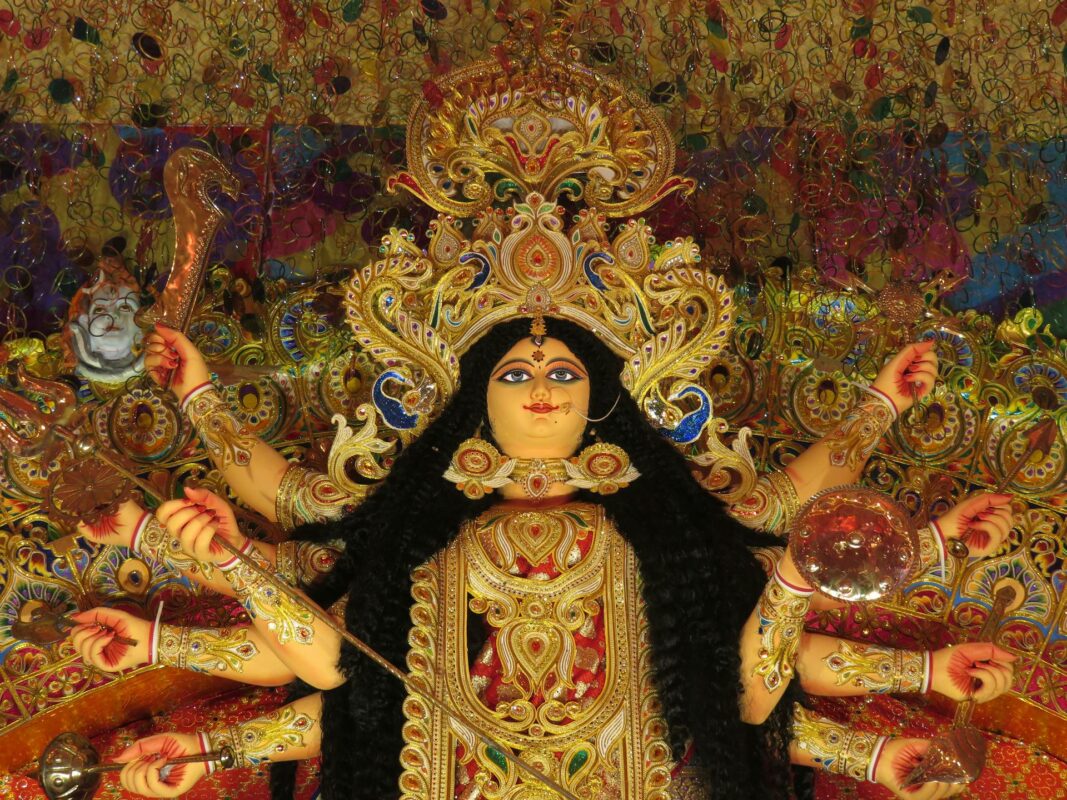
Every year, the colours for each day of Navratri are chosen based on astrological readings, and each hue represents a distinct attribute of the Durga Maa.
- Day 1 Shailputri (Yellow): Represents joy and brightness.
- Day 2 Brahmacharini (Green): Symbolizes growth and renewal.
- Day 3 Chandraghanta (Grey): Signifies strength and transformation.
- Day 4 Kushmanda (Orange): Stands for energy and enthusiasm.
- Day 5 Skandamata (White): Reflects purity and peace.
- Day 6 Katyayani (Red): Denotes passion and courage.
- Day 7 Kalaratri (Blue): Represents tranquillity and protection.
- Day 8 Mahagauri (Pink): Symbolizes hope and kindness.
- Day 9 Siddhidatri (Purple): Represents power and ambition.
By aligning your outfit with the colour of the day, you not only stay in sync with tradition but also enhance the festive spirit.
Day 1 Shailputri – Royal Yellow: Outfit for Morning Aarti
Kick-off Navratri with a serene and elegant yellow outfit. Since Day 1 is all about performing the Aarti and welcoming the Goddess into your home, a simple yet graceful ensemble is perfect.
Suggestions:
- A flowing yellow silk saree with golden embroidery offers a regal look.
- Pair it with a subtle bindi and lightweight jhumkas for an effortless morning look.
- If you prefer comfort, opt for a yellow anarkali suit with minimal embellishments.
Styling Tip: Keep the jewellery minimal for morning Aartis; a pair of traditional earrings and bangles will suffice.
Day 2 Brahmacharini – Gorgeous Green: Ethnic Wear with a Modern Twist
Green is the colour of Day 2, symbolizing growth. This is your chance to wear something earthy and refreshing.

Outfit Ideas:
- A green lehenga with mirror work is perfect for an evening Aarti or a light Garba session.
- For a modern twist, consider pairing a green kurtI with a flowy skirt or palazzos, creating a perfect Indo-Western look.
- Alternatively, a green saree with a ruffle drape can give you a trendy yet traditional vibe.
Pro Tip: Add a statement neckpiece to elevate the outfit without overpowering the look.
Day 3 Chandraghanta – Bold Grey: Indo-Western Fusions for Festivities
Grey may not seem festive at first, but with the right styling, it can be one of the most sophisticated colours. Day 3 is about strength and balance, so this is the perfect time to experiment with fusion outfits.
Outfit Inspirations:
- A grey dhoti-style saree paired with a structured blouse offers a bold, modern take on tradition.
- Consider a grey jumpsuit with ethnic prints, accessorized with silver jewellery for an evening Garba event.
- A grey silk salwar kameez with intricate embellishments can also add a unique twist to your festive wardrobe.
Accessorizing Tip: Silver oxidized jewellery works wonders with grey outfits, giving you an earthy yet glamorous feel.
Day 4 Kushmanda – Radiant Orange: Statement Sarees/Lehenga for Dandia

Orange represents enthusiasm and energy, making it the ideal colour for Day 4. A vibrant orange saree is the perfect choice for an evening filled with Garba and Dandiya.
Suggestions:
- Choose a Banarasi orange saree with golden threadwork for a classic look.
- If you’re a fan of more contemporary designs, go for an orange georgette saree with a trendy blouse.
- You can also wear an orange lehenga with minimal embroidery for a more youthful and energetic vibe.
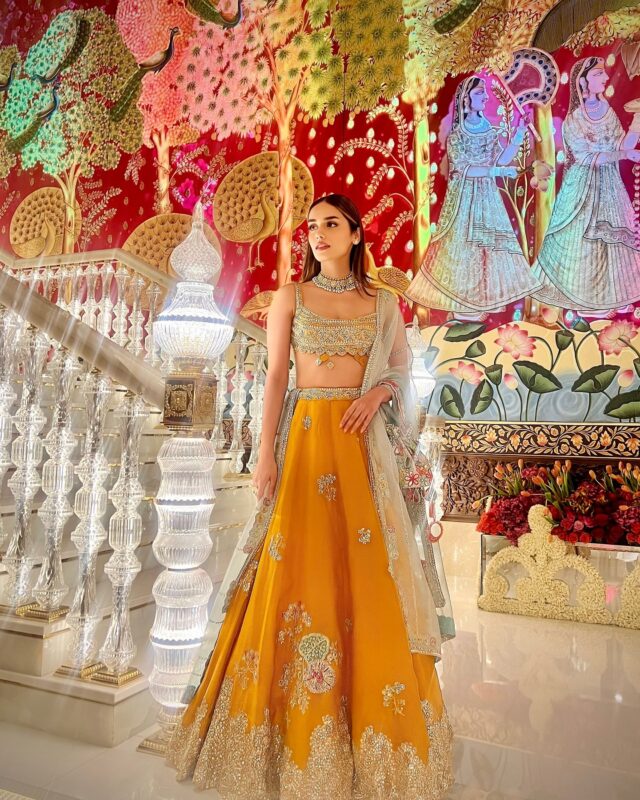
Makeup Tip: Keep the makeup warm with bronzed tones and a bold lip to match the bright outfit.
Day 5 Skandamata – White Elegance: Simple Yet Graceful Ensembles
On Day 5, wear white to channel purity and simplicity. White outfits, when styled properly, can make you look ethereal.
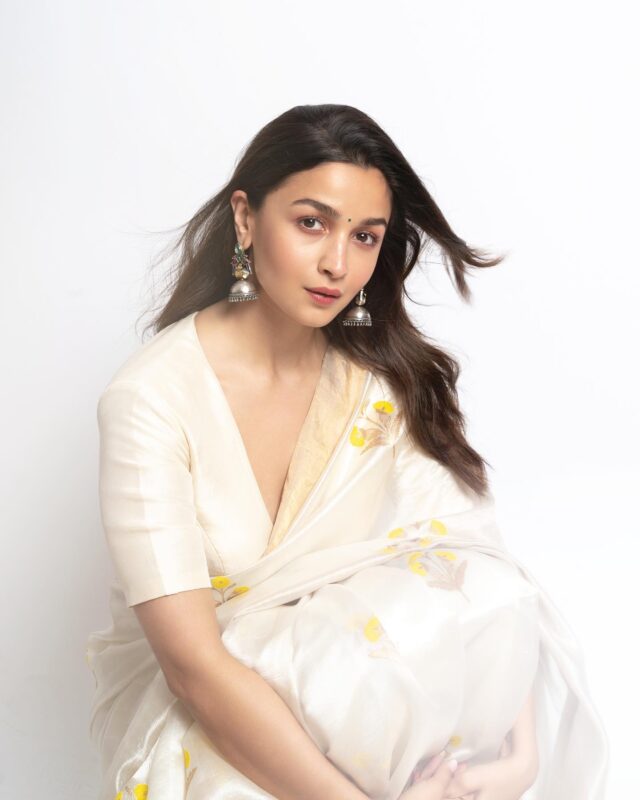
Outfit Choices:
- A white Chikankari saree is the epitome of grace and can be accessorized with silver or pearl jewellery.
- You can also opt for a white Anarkali with lace detailing for a minimalist yet elegant look.
- For a more contemporary take, consider a white kurti with gold threadwork paired with wide-legged pants.
Styling Tip: Keep the accessories light with pearls or minimal gold accents to maintain the outfit’s serene vibe.
Day 6 Katyayani – Fiery Red: Lehenga Choli for the Perfect Garba
Day 6 is all about channelling your inner energy and passion with the colour red. A red lehenga choli is the quintessential Garba outfit that will ensure you stand out on the dance floor.
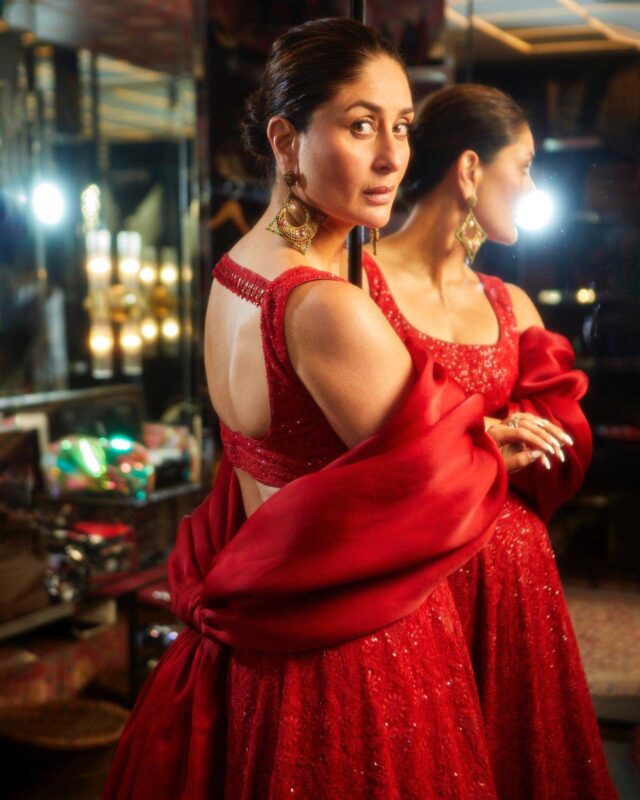
Recommendations:
- A red mirror-work lehenga will not only look festive but will also shimmer as you spin around during Garba.
- You can also opt for a red bandhani lehenga, which adds a traditional Gujarati touch.
- If lehengas aren’t your style, a red saree with a heavy border will look equally stunning for both Garba and Aarti.
Pro Tip: Pair your red outfit with bold, gold jewellery to enhance the fiery elegance.
Day 7 Kalaratri – Deep Blue: Contemporary Kurti Styles
On Day 7, deep blue represents protection and tranquillity. A deep blue outfit will give you an air of elegance and confidence.
Outfit Suggestions:
- A blue silk kurti with palazzos makes for a comfortable yet stylish option for an evening of light dancing.
- For a more traditional vibe, go for a blue sharara set with detailed embroidery.
- Alternatively, a blue maxi dress with ethnic motifs can bring together the best of modern and traditional styles.
Styling Tip: Opt for silver or Kundan jewellery with blue outfits for a chic and royal look.
Day 8 Mahagauri – Pink: Graceful Anarkali Suits for Puja
Pink is the colour of love and compassion, making it a beautiful choice for Day 8. A pink Anarkali suit is perfect for attending the Puja or evening festivities.

Outfit Ideas:
- A soft pink chiffon Anarkali with minimal detailing can give you an ethereal appearance.
- For a more vibrant touch, choose a bright pink lehenga with floral embroidery.
- A pink saree with zari work is another great option for those who prefer traditional attire.
Styling Tip: Keep the look soft and romantic with pastel makeup and delicate jewellery.
Day 9 Siddhidatri – Purple Glamour: Embellished Lehengas for Finale
Day 9, symbolizing power, calls for a regal purple outfit to close the festival on a high note.
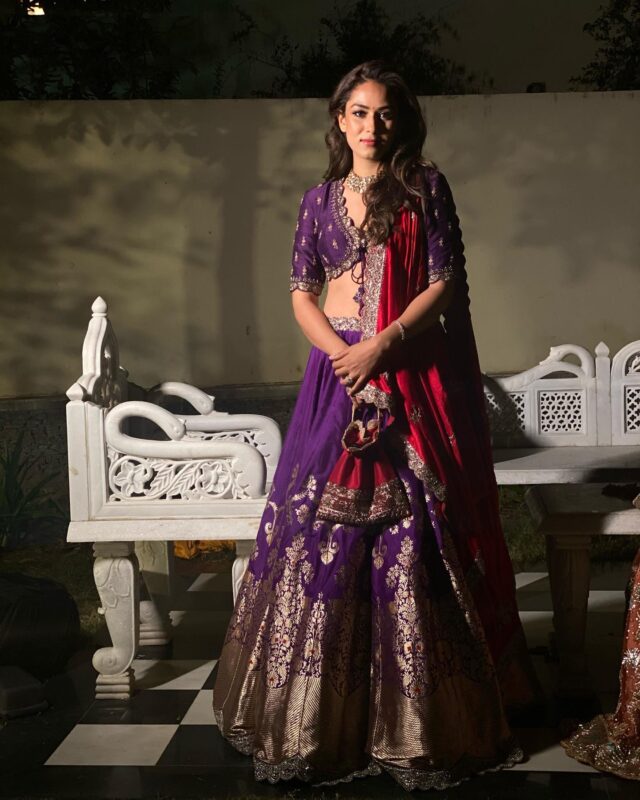
Outfit Recommendations:
- A purple velvet lehenga with intricate beadwork can make you the star of the night.
- You can also go for a purple saree with heavy embroidery, perfect for the final Puja or a Garba night.
- For a modern twist, try a purple indo-western gown that balances tradition with style.
Makeup Tip: Bold purple or berry lips paired with kohl-rimmed eyes can create a striking look.
Accessorizing Your Navratri Outfits
No Navratri outfit is complete without the right accessories. Here are some tips to elevate your look:
- Jhumkas and chandbalis for traditional outfits.
- Oxidized jewellery for fusion looks.
- Potli bags or clutches to match your outfit.
- Traditional bangles or kadas to enhance the ethnic vibe.
Hair and Makeup Tips for Navratri

From simple braids to glamorous updos, your hairstyle can significantly enhance your Navratri look. Here’s a quick guide:
Daytime
Opt for soft waves or a half-up, half-down style for a relaxed look.
Evening Garba
Go for a high bun or a fishtail braid to keep your hair in place while dancing. For makeup, keep it light for daytime and bolder for evening events with defined eyes and lips.
FAQs on Navratri Dress for Women
Can I wear Western outfits during Navratri?
Absolutely! You can mix and match to create fusion looks, blending Western and traditional elements for a modern Navratri ensemble.
What colours should be avoided during Navratri?
While no colour is off-limits, it’s best to follow the traditional Navratri colours for each day to stay in sync with the festival’s cultural significance.
How can I style my outfit for Garba night?
Opt for comfortable yet stylish outfits like lehengas or dhoti pants paired with a crop top. Add a lot of traditional jewellery and comfortable footwear for dancing.
Are there any rules about wearing jewellery during Navratri?
There’s no strict rule, but traditional jewellery like bangles, jhumkas, and necklaces made from silver or gold are preferred during Navratri.
What is the reason behind the 9 colours of Navratri?
The 9 colours of Navratri are symbolic and have deep spiritual significance, representing the nine forms of Maa Durga, worshipped over the nine days of the festival. Each day is dedicated to a different form of the Goddess, and the colours associated with these days are believed to invoke the divine qualities of the respective form.
Navratri is a festival of colour, devotion, and celebration. Your outfit choices throughout these nine days can help you feel both connected to tradition and fashion-forward.
By aligning your attire with the symbolic colours of each day, you’ll not only participate in the festive spirit but also shine through every occasion—from Aarti to Garba night.
Whether you prefer a bold lehenga or a graceful saree, each outfit can reflect the joy and energy of this beautiful festival.

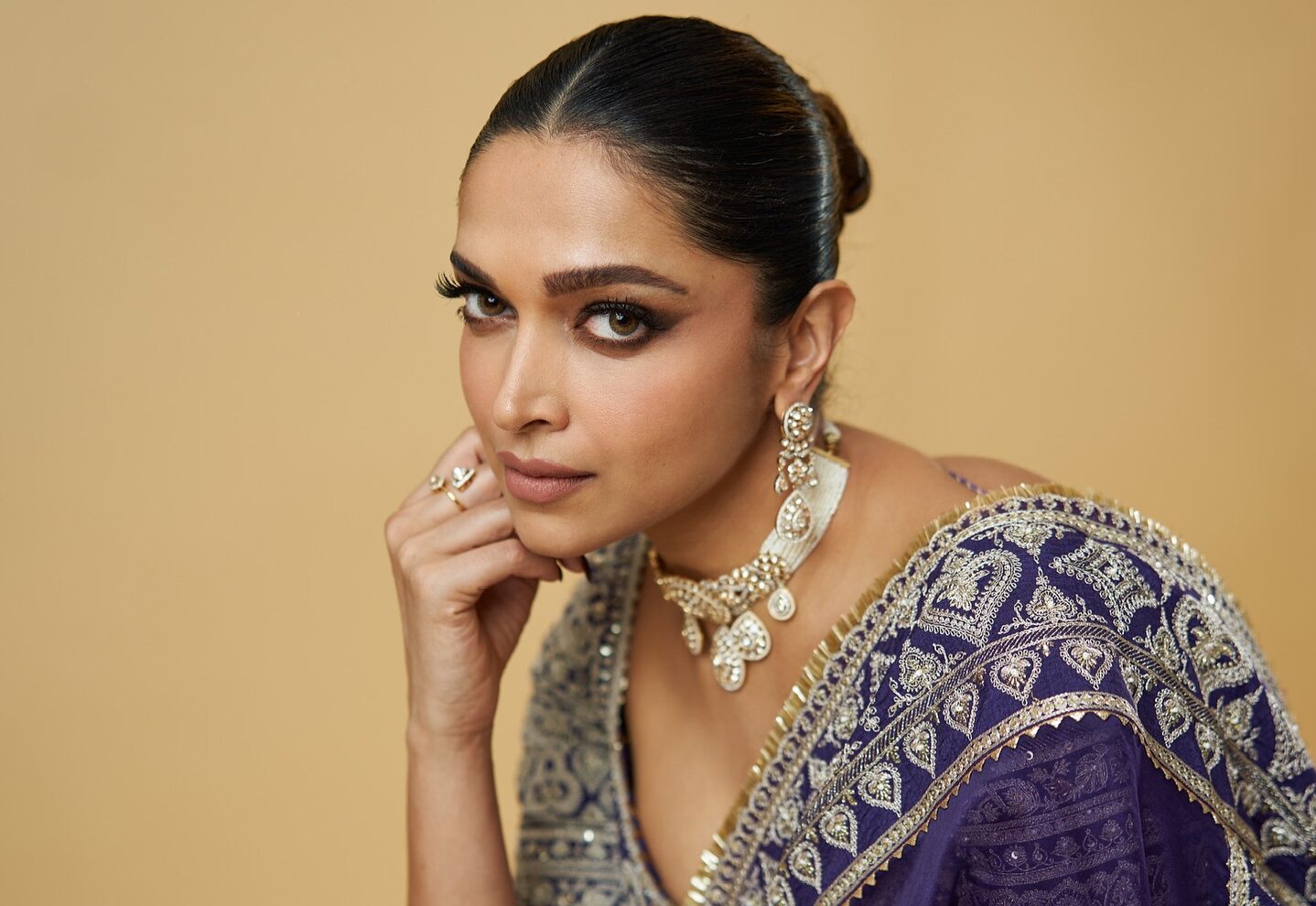






Are there any instances where science has validated spiritual practices or vice versa? Can the two fields complement each other in helping individuals achieve a higher understanding of the world around them?”,
“refusal